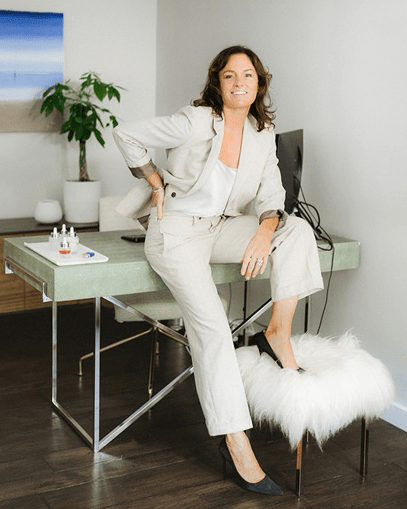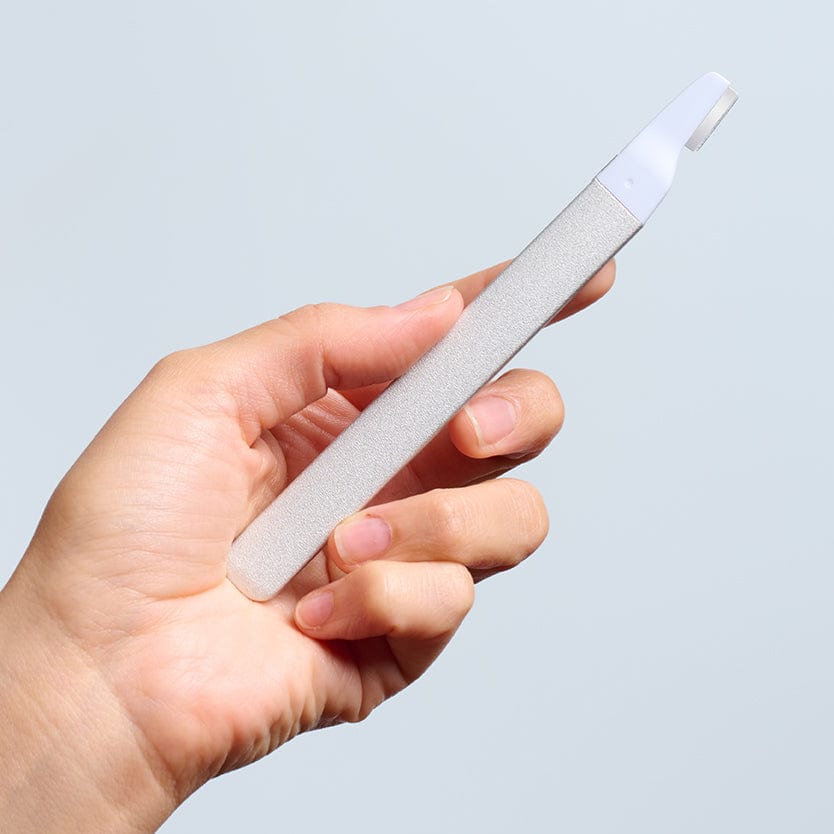10 Skincare Mistakes You Don’t Know You’re Making
Written by Kerry Benjamin

Unless you’re genetically blessed (darn you!), healthy skin is something that takes time and effort to achieve. Bad skin habits can get in the way of your progress towards your best skin. The good news? Most skincare mistakes are easy to correct. Here are some common no-no’s and how to fix them.
1. You're Not Cleansing Properly
This one might seem obvious, but it’s important to wash your face in the morning and evening, and to do it right. Just splashing your face with water in the morning isn’t enough— you need a cleanser like our Hydrating Gel Facial Cleanser to remove oil and acne-causing bacteria that transfers to your face from your saliva, hair, and pillowcase while you sleep. And always use lukewarm water; hot water can zap moisture out of your skin and cause dryness.
Give your skin a good cleanse in the evening, too--even if you aren’t wearing makeup. Aging pollution, pollen and other environmental irritants build up on your face throughout the day. Cleanse your face when you get home instead of waiting for bedtime. You’re more likely to do your skincare routine before you’re tired. Plus, then you can relax for the evening!
2. You're Exfoliating Too Much
Although removing dead skin cells is a must, it’s possible to overdo it, leaving skin red and irritated. Harsh scrubs are usually the culprits behind over-exfoliation. Scrubs often contain tiny crystals or shell particles that have rough edges. When you press sharp little edges into your face, you can create tiny tears in the surface of the skin that cause redness and irritation. Scrubs are also more likely to mess with your pH and lipid barrier—two factors that keep your skin safe from acne-causing bacteria, redness, and dryness.
There are gentler and more efficient ways to exfoliate—reach for a peel like our TCA Multi-Acid Face Peel or our Dermaplaning Tool. Our peel uses a gentle blend of acids to resurface the skin evenly while the Dermaplaning Tool instantly removes the outermost layer of dead skin cells and peach fuzz.
3. You're Using the Same Washcloth Everyday
If you’re using the same washcloth day-in and day-out to wash or dry your face, it’s probably crawling with bacteria. Try using baby towels (you can find them on Amazon) and grab a fresh one each time you cleanse your face. They are small, don’t take up much room in the laundry, and are perfect for removing makeup and debris from the day. Simply wet the towel, ring it out, and wipe your entire face after cleansing. The same is true for your pillowcases and anything else that comes into contact with your face throughout the day. Switch out your pillowcases every 2-3 days (more frequently if you’re acne-prone) and carry alcohol-based cleansing wipes in your purse to wipe down anything that touches your face frequently, like your phone.
4. You're Wasting Your Time on Sheet Masks
Sheet masks might be Instagrammable, but many of them don’t actually do much to improve your skin. A lot of sheet masks on the market don’t contain enough active ingredients and instead contain fillers like glycerin or alcohol. Instead of falling for the hype, focus your routine on serums that are high in active ingredients. If your skin is begging for a sip of moisture, skip the sheet mask and reach for a hyaluronic acid serum like our HA Hydrating Serum.
5. You're Not Sanitizing Your Skincare Tools
Even if you have perfectly clear skin, you should still take steps to make sure that your skincare routine is hygienic. Skincare tools can harbor some pretty yucky stuff (bacteria, anyone?) if you don’t clean them properly. Rubbing alcohol is our go-to for most metal tools—wipe down your tools after every use with a clean cloth or cotton ball soaked in alcohol and make sure they dry thoroughly. If you don’t have rubbing alcohol on hand, you can clean your tools with warm, soapy water.
6. You're Applying Serums in the Wrong Order
Not all serums are created equal, and the order in which you apply them matters— otherwise, you’ll have active ingredients sitting on top of your skin without penetrating. Apply lighter, water-based serums first since they are more easily absorbed into the skin. Follow with thicker serums and oil-based serums that will hydrate and add a protective barrier on the skin.
7. You're Neglecting Your Neck
Your neck has thin skin and is susceptible to aging faster than other parts of your body. Most serums and moisturizers that you use on your face work just as well on the neck, so don’t stop your skincare routine at the jawline.
8. You're Picking Your Pimples
While it’s tempting to squeeze a blemish and relieve some of the pressure, there are better ways to reduce a pimple without scarring your skin. A High Frequency Device is an excellent tool for battling deep acne. It uses a small electrical current to stimulate oxygen deep within the pore, killing bacteria at the source. It helps reduce inflammation, redness, and the size of painful breakouts.
9. You're Not Wearing Enough Sunscreen
Sure, you’re wearing sunscreen, but are you wearing enough? Are you wearing it every day? Sunscreen is the best way to prevent signs of aging, not to mention skin cancer. Reapply sunscreen every 2-4 hours when you’re in the sun. Look for mineral sunscreens with zinc oxide or titanium dioxide; chemical versions come with potential toxicity concerns and can be irritating to sensitive skin types. Powder sunscreens are great over makeup—just make sure you dust a generous amount on your skin for adequate protection and re-apply during the day.
10. You're Using Too Many Products
Redness, irritation, and sensitivity are all signs that you might be using too many active ingredients. Many products now contain higher concentrations of actives than they once did, which means you might be using multiple exfoliating or turnover-stimulating ingredients at the same time. Once your skin is irritated, even a relatively basic cream can make things worse. Stick to a cleanser, no more than three serums, and one moisturizer each night. To avoid reactions, don’t layer retinol with active serums or exfoliating acids like glycolic or lactic acid. If you do experience a reaction, remove all products except for a basic cleanser and moisturizer like Cerave until your skin returns to normal.
Creating and maintaining good skincare habits can make all the difference— you’re only a few tweaks away from your healthiest, most radiant skin!
About the Author

Kerry Benjamin, a licensed aesthetician, has over 14 years of experience. Kerry is the driving force behind StackedSkincare. As the company's CEO, Kerry has dedicated her career to revolutionizing skincare. Her innovative approach combines peels, serums, and specialized tools to effectively address a wide range of skin concerns. CA LE license number Z98459.

